Rhinos + Art: Painting with a Purpose, Using Training As a Conservation Tool
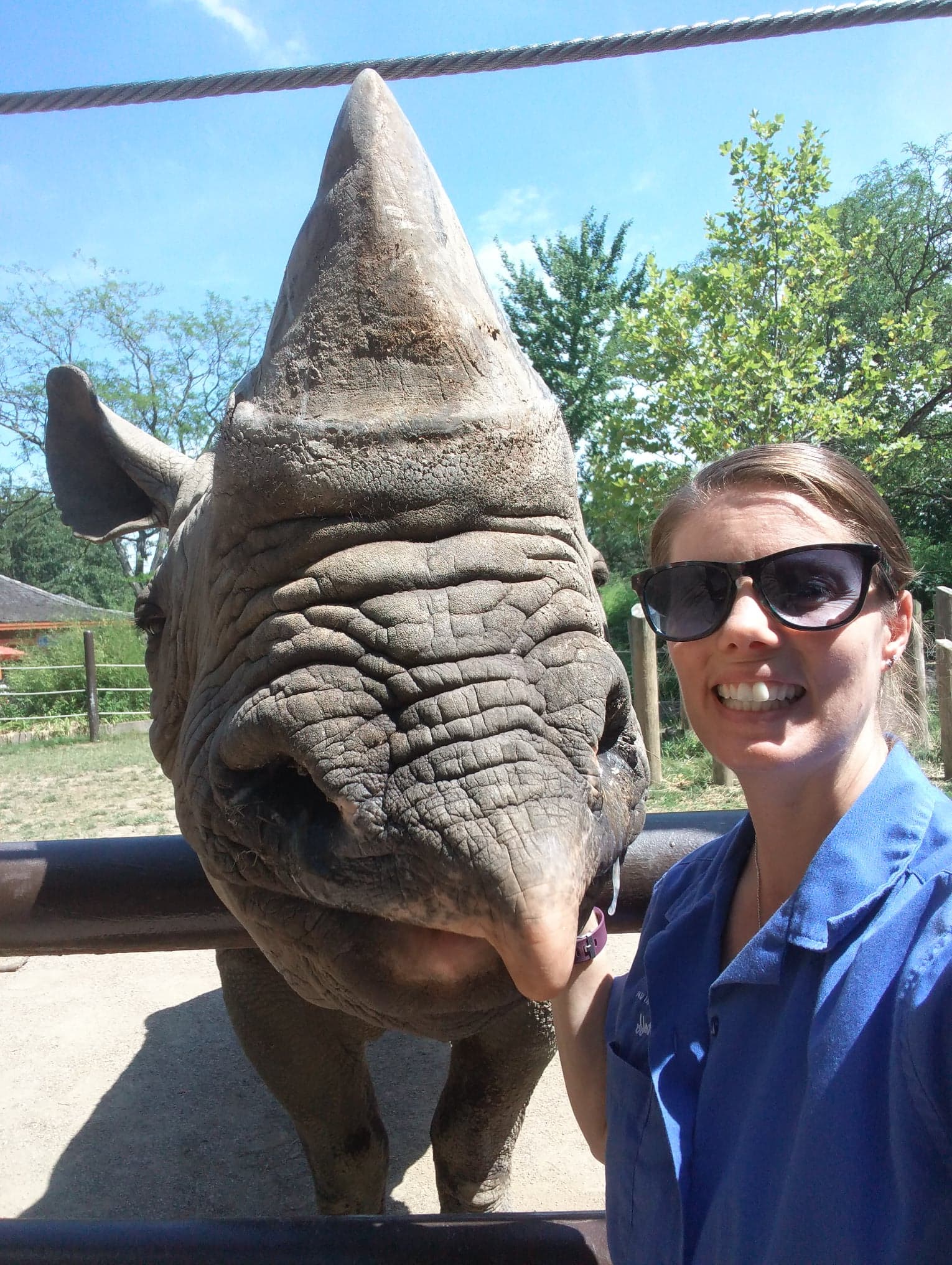
Last year, as part of our Rhinos + Art celebration, we shared this adorable video of Rosie the Black rhino from one of our Zoo partners, the Columbus Zoo in Ohio. We loved it so much, we decided to dig a little deeper and find out what goes into training a rhino, why painting is important for Rosie, and how training rhinos in a zoo can help rhinos in the wild.
This is the first of a two-part series on rhino training where I speak with Mindi, a Zookeeper at the Columbus Zoo. Mindi knew at a young age she wanted to work with animals and is now about to hit her 10 year anniversary of zookeeping! Much of that time she has spent working with Rosie, a 28-year-old Black rhino who enjoys smashing watermelons, making art, and getting scratches from her keepers.
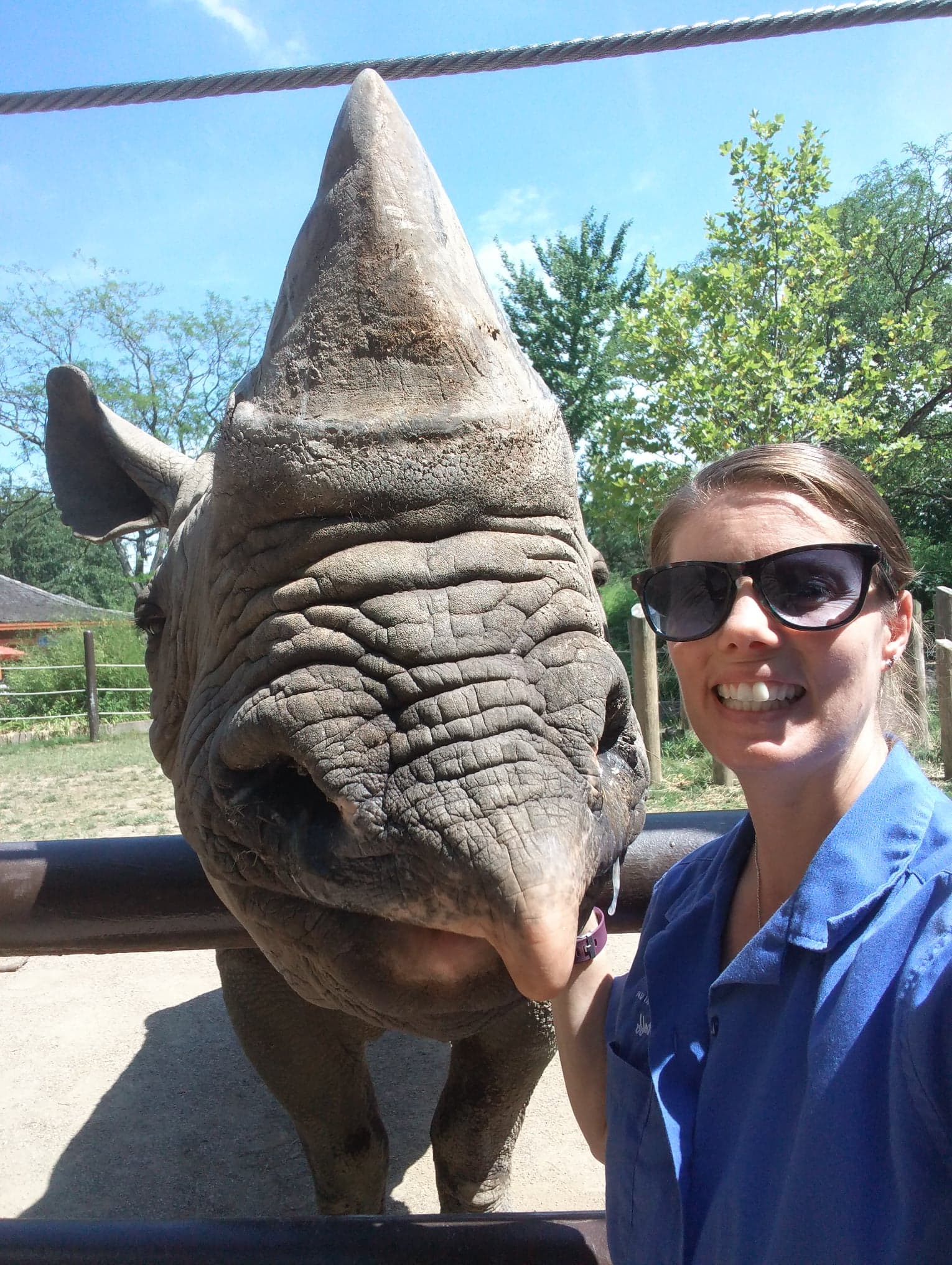
What is the clicking sound we’re hearing in the painting video?
We use a clicker with Rosie as the bridge during her training sessions. A bridge is a definitive sound that lets an animal know it has responded properly to the command that was given and the reward is coming.
You mentioned treats, what kinds of treats does Rosie like? Does she prefer some foods to others?
Rosie likes anything sweet! Apples are used only as a training reward during sessions, so they are more of a special treat. Her favorite treat of all is watermelon. When we give her a whole melon she smashes it with her horn and eats the entire thing!
How did you train the “paint” behavior?
Rosie was already trained to paint when she came to the Columbus Zoo. She will raise her upper lip and allow us to smear non-toxic paint on it. We then hold the canvas in front of her and ask her to paint, and she moves her lip all around on the canvas to create the painting. She will even allow us to wash and dry her lip off between colors. Because of her painting style, each creation is very unique- sometimes she makes quick, short strokes with her lip and sometimes she really presses her lip against the canvas making thicker strokes.
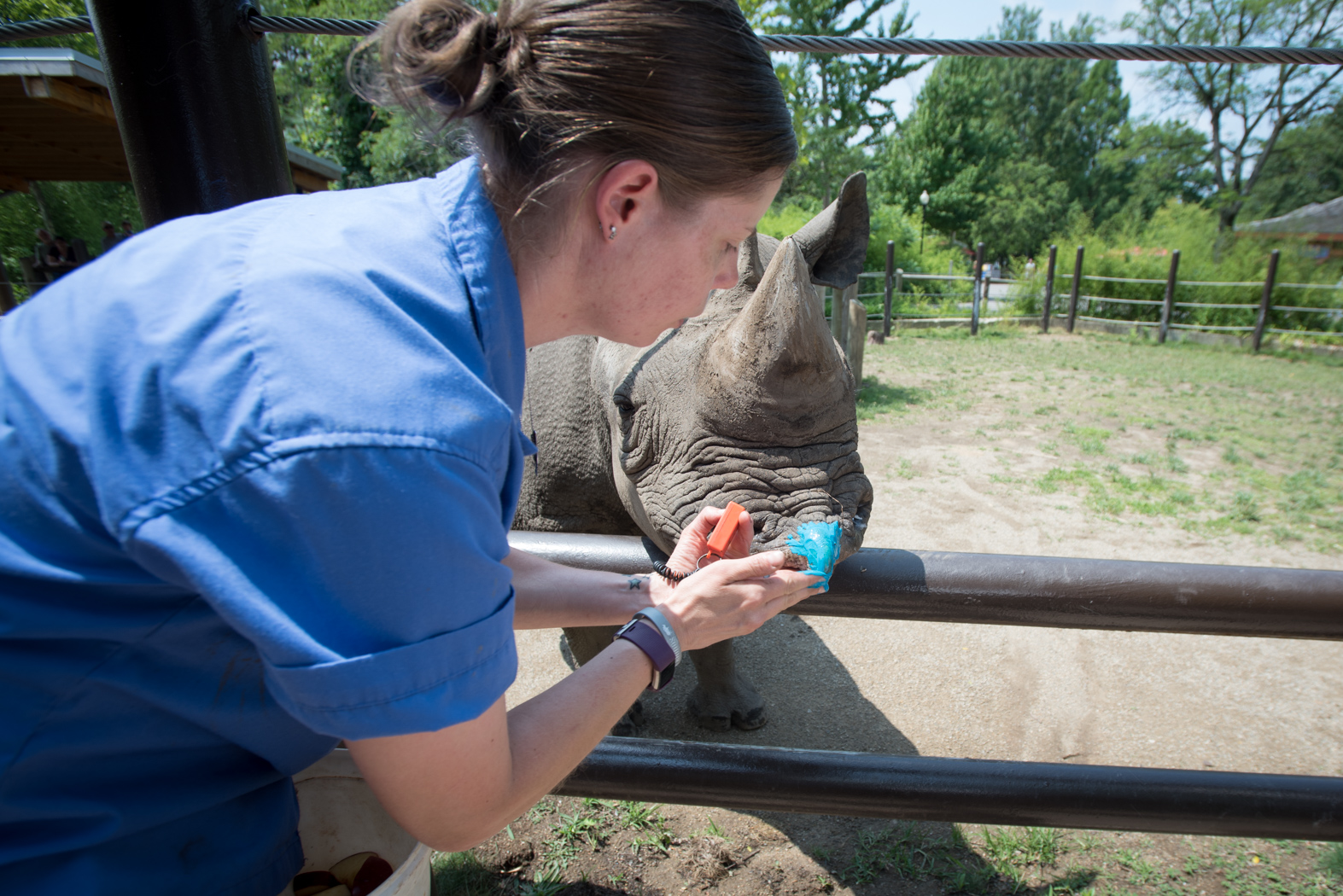
How do Rosie’s paintings help rhinos in the wild?
Our Columbus Chapter of the American Association of Zookeepers holds a Bowling for Rhinos fundraising event every year. In addition to the public bowling event we raffle off many different items, including Rosie’s paintings. In recent years we have also started selling items that Rosie has painted, such as ornaments, wine glasses, beer mugs, and picture frames. 100% of the money we raise goes to conservation projects in Africa and Asia to help protect rhinos and other animals in their native habitats.
How does Rosie make a great ambassador for her species? How does visiting Rosie at the zoo raise awareness about rhino conservation?
Rosie is the only rhino at the Columbus Zoo right now, so when it comes to anything rhino related it’s all about her! Her gentle nature and sweet personality make a lasting impression on those who have the opportunity to be up close and personal during special tours.
We have regularly scheduled keeper talks that allow us to share information about Rosie and about wild rhinos. The talks give us the opportunity to share our passion for rhinos and educate our guests about their plight in the wild.
What do you feel is the most important contribution our readers can make to help save rhinos?
Education and awareness can go a long way in contributing to conservation. When I interact with guests at a keeper talk or during a tour, I always do my best to educate them about conservation and encourage them to learn more about it. The more informed people are about a situation the more likely they are to share it with others. Following organizations like the Columbus Zoo and IRF on social media is a good place to start.
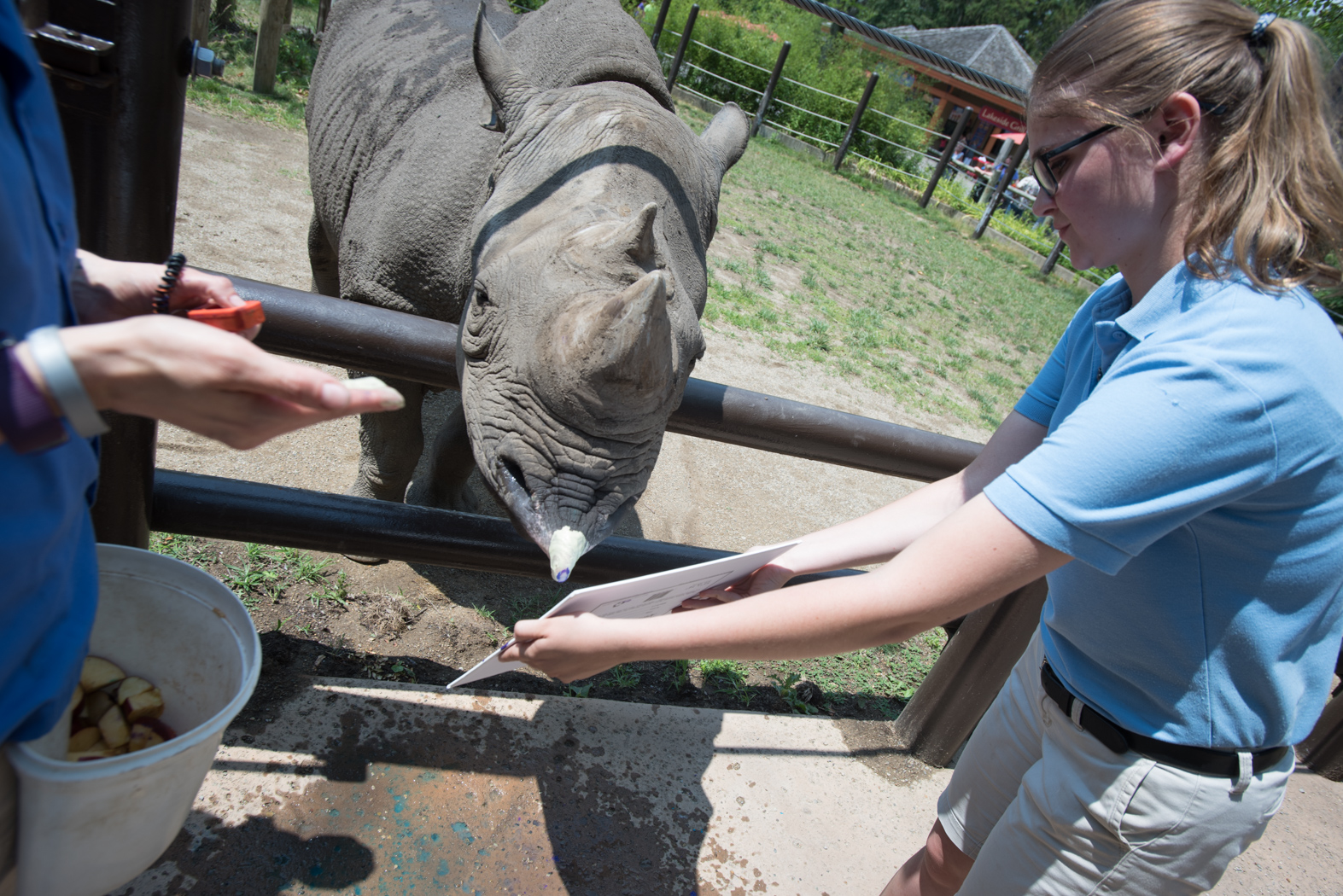
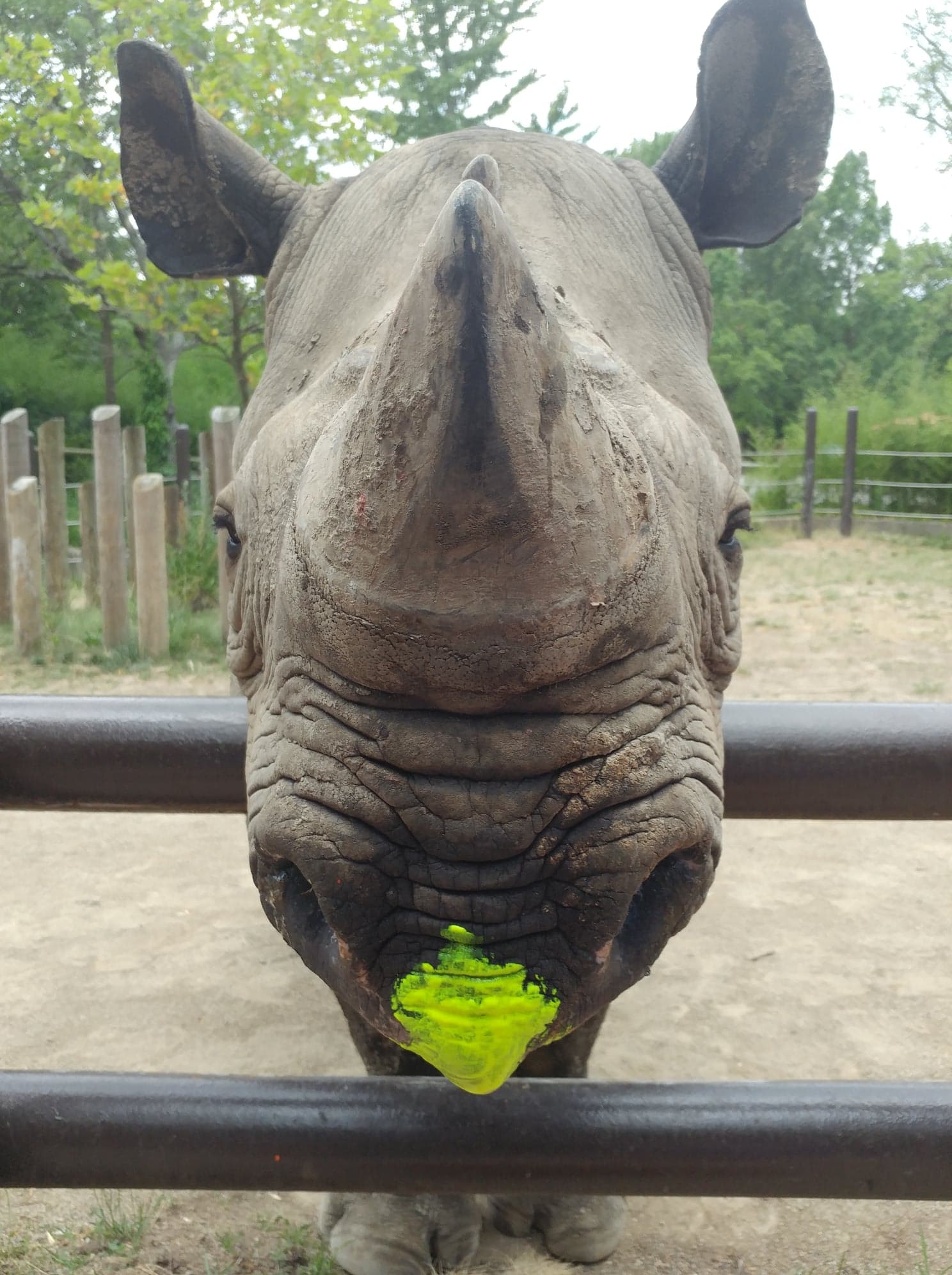
So Rosie’s lip-painting behavior is not only fun to watch, it has purpose as well. As Mindi describes above, the paintings are sold to raise money for rhino conservation and also serves as a form of enrichment for Rosie.
While a painting demonstration is a great visual and talking point for rhino conservation, behind the scenes, zookeepers spend the majority of their training-time focused on behaviors that are centered around the care of the animal. They’re the “non-showy” behaviors that you usually don’t get to see but are so important in the daily lives of these animals. In the next part of this series, we’ll show you those behaviors and exactly how Rosie participates in her own health care as well as discuss how training rhinos in zoos can help save their wild counterparts.
About the author:
Stacy Strother is an intern with IRF and entered the zoo field with a Psychology degree and a passion for using training and behavior knowledge to improve the lives of animals in captivity. She has 10+ years of animal training experience with creatures of land, air, and sea and has worked or volunteered with all 5 species of rhino.

One thought on “Rhinos + Art: Painting with a Purpose, Using Training As a Conservation Tool”
Can I purchase one of Rosie’s paintings?